 If I asked you what grain is the most harvested in the world, you’d probably answer either wheat or rice. But the answer is actually corn, more accurately called ‘maize.’ This nutritious crop that originated in Mexico feeds not only people but also animals around the world. We’re used to the wonderfully tender sweet corn harvested in late summer and early autumn, but most maize is actually field corn, more starchy than sweet and used as animal feed or to make cornmeal and flour. For a long time, biologists puzzled about the origins of this important crop. There is no wild plant that looks anything like modern corn, which is actually a giant grass. The closest relative is a scrawny branching plant with hard dark seeds called teosinte. It seems a huge jump from teosinte to corn, yet geneticist George Beadle found in the 1930s that corn and teosinte have the same number of chromosomes and could be crossbred to produce hybrids. With the limited tools available at that time, Beadle deduced that only about five genes were involved in creating the differences between teosinte and corn. Fast forward to modern times, when scientists can look directly at DNA and analyze every detail of its structure. We now know that Beadle came very close to the truth—about five regions in the DNA seem to control the major differences between teosinte and corn. For example, these two plants look so very different, yet just one single gene turns a branched plant into a single stalk, like a stalk of corn. Another single gene controls one of the most dramatic and certainly most important traits for farmers—the nature of the seeds and their stalk. In teosinte, each seed has a hard covering. Just one gene eliminates the hard covering and produces a stalk bearing exposed seeds, like an ear of corn. Scientists now use maize as a perfect example of two major ways evolution happens. One way is through major sudden jumps, like the change from a branching plant to a single stalk. The other is the more gradual kind of change that has led to the thousands of different kinds of maize grown by farmers today. There are probably hundreds of varieties of sweet corn and thousands of varieties of field corn. Think about that the next time you bite into a nice crunchy taco made from a corn tortilla.  Corn was a very important crop for homesteaders in the American West, used both to feed themselves as well as their animals. Read about it in Homesteading: Settling America's Heartland, revised and expanded edition, Mountain Press, 2013. Dorothy Hinshaw Patent is a member of iNK's Authors on Call and is available for classroom programs through Field Trip Zoom, a terrific technology that requires only a computer, wifi, and a webcam. Click here to find out more. MLA 8 Citation
Patent, Dorothy Hinshaw. "Amazing Maize." Nonfiction Minute, iNK Think Tank, 8 June 2018, www.nonfictionminute.org/the-nonfiction-minute/Amazing-Maize.
0 Comments
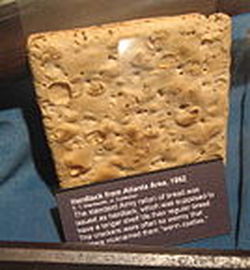 During the Civil War, soldiers loved to eat and to sing. One of their favorite songs was about food they hated: “Hardtack, Come Again No More!” It was a parody of composer Stephen Foster’s popular 1854 tune “Hard Times Come Again No More.” Hardtack was a thick cracker that formed the men's basic ration. Nearly every soldier received nine or ten every day. Hardtack lived up to the “hard” part of its name. Soldiers often had trouble crunching the rock-like crackers and gave them nicknames such as “teeth dullers,” “sheet-iron crackers,” “jawbreakers,” and so on. According to a popular joke, a soldier bit into a piece of hardtack. “I found something soft!” he told his comrades. “What is it?” they asked. “A nail!” he replied. To make hardtack easier to eat, soldiers often bashed the crackers with the butt end of their rifles. They scooped up the crumbs and mixed them with bacon grease and salt pork to make a kind of mush called skillygalee. Hardtack had another nickname: “worm castles.” Worms frequently burrowed into the crackers. To get rid of those little wrigglers, soldiers dunked the crackers in hot coffee. The hardtack fell apart and the worms floated to the surface. Sometimes the men had contests to see whose hardtack had the most worms. Reportedly, the record was 32! Not everyone threw the little creatures away, though. One soldier explained that “They eat better than they look, and are so much clear gain in the way of fresh meat.” If hardtack had all these problems, why was it such an important part of the soldiers’ daily diet? First, it was easy and inexpensive to make. Every day 3 or 4 million crackers popped out of bakers’ ovens and were shipped to the armies in the field. Second, hardtack hardly ever spoiled. In 1898, U.S. Navy sailors in the Spanish-American War chowed down on hardtack baked more than 30 years earlier during the Civil War. Third, the crackers didn’t weigh very much. Soldiers could carry enough hardtack in their backpacks to eat for several days. Soldiers joked that they could stitch together crackers to make a bulletproof vest, though it’s doubtful that anyone actually did. Maybe they should have. In 2010, college students performed an experiment by firing pistol shots into chunks of hardtack. They were astonished to find that the crackers stopped the bullets! © Jim Whiting, 2014  Jim Whiting has written 250 nonfiction books. He's known as Washington State's most prolific children's book author. MLA 8 Citation Whiting, Jim. "Hard Crackers in Hard Times." Nonfiction Minute, iNK Think Tank, 12 Sept. 2017, www.nonfictionminute.org/the-nonfiction-minute/hard-crackers-in-hard-times. Today is International Waffle Day! It originated in Sweden, probably due to confusion between the Swedish words Våffeldagen (Waffle Day) and Vårfrudagen (“Our Lady’s Day”), which also falls on March 25. Vårfrudagen marks the Annunciation, when the archangel Gabriel tells the Virgin Mary that she will become the mother of Jesus Christ. Despite this coincidence, International Waffle Day has no religious significance. In Sweden, the date is the traditional start of spring and Swedes (and many people throughout the world) celebrate by—you guessed it—eating waffles. Historians date the origin of waffles back to the ancient Greeks, who cooked flat cakes called obleios between two hot metal plates. In the 1200s, an unknown European craftsman invented plates with the honeycomb pattern that characterize waffles. Waffles reportedly came to the New World in 1620 with the Pilgrims. Americans also celebrate National Waffle Day on August 24. On this date in 1869, Cornelius Swartwout received the first U.S. patent for a waffle iron. Designed for use on top of coal-burning stoves, it consisted of a cast-iron griddle and cover joined by a hinge. A handle and clasp prevented the cook from being burned. When the batter was poured in, it would cook for a few minutes and then the iron would be flipped over to cook the other side. The widespread use of electricity in the early 1900s resulted in the development of the electric waffle iron, making it easy to produce one of the most popular breakfast foods. Waffles have another distinction. About 1971, University of Oregon track coach Bill Bowerman was experimenting with new soles for running shoes. He wanted something to provide traction and stability, yet lighter in weight than current models. Looking at his wife’s waffles gave him an idea. He poured rubber into her waffle iron and let it cook for a few minutes. He removed it, let it harden, then cut it to the proper shape. His experiments ruined the waffle iron, but they resulted in a new shoe called the Waffle Trainer. Bowerman joined businessman Phil Knight, one of his former runners, and founded the Nike Shoe Company to market the Waffle Trainer. The shoe created a sensation among runners of all levels of ability. Today Nike is almost synonymous with running shoes and other athletic footwear.  Do you like ketchup? Maybe relish is your favorite condiment. Well, people in the ancient world had a favorite condiment, too. It was called garum. The ancient Greeks couldn’t get enough of it. Later, the Byzantines loved it, too. But garum was most popular during ancient Roman times. (The Roman Empire lasted from 27 BC to AD 476, so they must have gobbled down a lot of garum.) The problem with garum was that making it could be an extremely stinky process. Garum makers were told to move their factories to the outskirts of the city, although probably no one enforced this. The Romans dumped garum onto practically everything they ate. Should you be curious to try garum yourself, I’ve written out the recipe for you. You’re welcome.
Garum is actually quite nutritious—full of amino acids, proteins, and vitamin D from all that time in the sun. And the rotten sludge left at the bottom is also highly nutritious, so you can save that for another use. Try spreading it on toast! (c) Sarah Albee, 2014 A Roman banquet  Sarah Albee's latest book is Poison: Deadly Deeds, Perilous Professions and Murderous Medicines. You can read a review that gives you a dose of what's in this book. MLA 8 Citation Albee, Sarah. "Something's Rotten in Rome." Nonfiction Minute, iNK Think Tank, 15 Sept. 2017, www.nonfictionminute.org/the-nonfiction-minute/somethings-rotten-in-rome. |
*NEWS
|
For Vicki Cobb's BLOG (nonfiction book reviews, info on education, more), click here: Vicki's Blog
The NCSS-CBC Notable Social Studies Committee is pleased to inform you
that 30 People Who Changed the World has been selected for Notable Social Studies Trade Books for Young People 2018, a cooperative project of the National Council for the Social Studies (NCSS) & the Children’s Book Council
Categories
All
Abolitionists
Adams Janus
Adaptation
Adaptations
Adkins Jan
Advertising
Aerodynamics
Africa
African American History
African Americans
Africa West
Agriculture
Aircraft
Air Pilots
Air Pressure
Air Travel
Albee Sarah
Alchemy
Alligators
Allusion
American History
American Icons
Amphibians
Amundsen Roald
Anatomy
Ancient
Ancient Cultures
Anderson Marian 1897-1993
Animal Behavior
Animal Experimentation
Animal Intelligence
Animals
Animation
Antarctica
Ants
Apache Indians
Apes
April Fool's Day
Architecture
Argument
Arithmetic
Art
Art Deco
Artists
Arts
Asia
Astronauts
Astronomy
Athletes
Atomic Theory
Audubon Societies
Authors
Autobiography
Automobiles
Aviation
Awards
Bacteria
Baseball
Battuta Ibn
Bears
Beatles
Beavers
Bees
Biodegradation
Biography
Biology
Biomes
Biomimicry
Biplanes
Birds
Black Death
Black History
Blindness
Blizzards
Bombs
Bonaparte Napoleon
Boone Daniel
Botany
Brazil
Bridges
Brill Marlene Targ
Brooklyn Bridge
Brown John
Buffaloes
Building Materials
Butterflies
Caesar
Caesar Julius
Caissons
Calculus
Calendars
Cannibal
Capitals
Caravaggio
Carbon Dioxide
Carnivores
Carson Mary Kay
Cartoons & Comics
Carving (Decorative Arts)
Cascade Range
Castaldo Nancy
Castles
Castrovilla Selene
Cathedrals
Cats
Caves
Celts
Cemeteries
Chemistry
Children's Authors
Child Welfare
China
Choctaw Indians
Christmas
Chronometers
Cicadas
Cinco De Mayo
Ciphers
Circle
Citizenship
Civil Rights
Civil Rights Movements
Civil War
Civil War - US
Climate
Climate Change
Clocks And Watches
Clouds
Cobb Vicki
COBOL (Computer Language)
Code And Cipher Stories
Collard III Sneed B.
Collectors And Collecting
Color
Commerce
Communication
Competition
Compilers
Composers
Computers
Congressional Gold Medal
Consitution
Contests
Contraltos
Coolidge Calvin
Cooling
Corms
Corn
Counterfeiters
Covid-19
Crocodiles
Cryptography
Culture
Darwin Charles
Declaration Of Independence
Decomposition
Decompression Sickness
Deep-sea Animals
Deer
De Medici Catherine
Design
Detectives
Dickens Charles
Disasters
Discrimination
Diseases
Disney Walt
DNA
Dogs
Dollar
Dolphins
Douglass Frederick 1818-1895
Droughts
Dr. Suess
Dunphy Madeleine
Ear
Earth
Earthquakes
Ecology
Economics
Ecosystem
Edison Thomas A
Education
Egypt
Eiffel-gustave-18321923
Eiffel-tower
Einstein-albert
Elephants
Elk
Emancipationproclamation
Endangered Species
Endangered-species
Energy
Engineering
England
Englishlanguage-arts
Entomology
Environmental-protection
Environmental-science
Equinox
Erie-canal
Etymology
Europe
European-history
Evolution
Experiments
Explorers
Explosions
Exports
Extinction
Extinction-biology
Eye
Fairs
Fawkes-guy
Federalgovernment
Film
Fires
Fishes
Flight
Floods
Flowers
Flute
Food
Food-chains
Foodpreservation
Foodsupply
Food-supply
Football
Forceandenergy
Force-and-energy
Forensicscienceandmedicine
Forensic Science And Medicine
Fossils
Foundlings
France
Francoprussian-war
Freedom
Freedomofspeech
French-revolution
Friction
Frogs
Frontier
Frontier-and-pioneer-life
Frozenfoods
Fugitiveslaves
Fultonrobert
Galapagos-islands
Galleys
Gametheory
Gaudi-antoni-18521926
Gender
Generals
Genes
Genetics
Geography
Geology
Geometry
Geysers
Ghosts
Giraffe
Glaciers
Glaucoma
Gliders-aeronautics
Global-warming
Gods-goddesses
Gold-mines-and-mining
Government
Grant-ulysses-s
Grasshoppers
Gravity
Great-britain
Great-depression
Greece
Greek-letters
Greenberg Jan
Hair
Halloween
Handel-george-frederic
Harness Cheryl
Harrison-john-16931776
Health-wellness
Hearing
Hearing-aids
Hearst-william-randolph
Henry-iv-king-of-england
Herbivores
Hip Hop
History
History-19th-century
History-france
History-world
Hitler-adolph
Hoaxes
Holidays
Hollihan Kerrie Logan
Homestead-law
Hopper-grace
Horses
Hot Air Balloons
Hot-air-balloons
Housing
Huguenots
Human Body
Hurricanes
Ice
Icebergs
Illustration
Imagery
Imhotep
Imperialism
Indian-code-talkers
Indonesia
Industrialization
Industrial-revolution
Inquisition
Insects
Insulation
Intelligence
Interstatecommerce
Interviewing
Inventions
Inventors
Irrational-numbers
Irrigation
Islands
Jacksonandrew
Jazz
Jeffersonthomas
Jefferson-thomas
Jemisonmae
Jenkins-steve
Jet-stream
Johnsonlyndonb
Jokes
Journalism
Keeling-charles-d
Kennedyjohnf
Kenya
Kidnapping
Kingmartinlutherjr19291968
Kingmartinlutherjr19291968d6528702d6
Kings-and-rulers
Kings Queens
Kings-queens
Koala
Labor
Labor Policy
Lafayette Marie Joseph Paul Yves Roch Gilbert Du Motier Marquis De 17571834
Landscapes
Languages-and-culture
Law-enforcement
Layfayette
Levers
Levinson Cynthia
Lewis And Clark Expedition (1804-1806)
Lewis Edmonia
Liberty
Lift (Aerodynamics)
Light
Lindbergh Charles
Liszt Franz
Literary Devices
Literature
Lizards
Longitude
Louis XIV King Of France
Lumber
Lunar Calendar
Lynching
Macaws
Madison-dolley
Madison-james
Madison-james
Mammals
Maneta-norman
Maneta-norman
Marathon-greece
Marine-biology
Marine-biology
Marines
Marsupials
Martial-arts
Marx-trish
Mass
Massachusetts-maritime-academy
Mass-media
Mastodons
Mathematics
May-day
Mcclafferty-carla-killough
Mcclafferty-carla-killough
Mckinley-william
Measurement
Mechanics
Media-literacy
Media-literacy
Medicine
Memoir
Memorial-day
Metaphor
Meteorology
Mexico
Mickey-mouse
Microscopy
Middle-west
Migration
Military
Miners
Mississippi
Molasses
Monarchy
Monsters
Montgomery
Montgomery-bus-boycott-19551956
Montgomery-heather-l
Monuments
Moon
Moran-thomas
Morsecode
Morsesamuel
Moss-marissa
Moss-marissa
Motion
Motion-pictures
Mummies
Munro-roxie
Munro-roxie
Musclestrength
Museums
Music
Muslims
Mythologygreek
Nanofibers
Nanotechnology
Nathan-amy
Nathan-amy
Nationalfootballleague
Nationalparksandreserves
Nativeamericans
Native-americans
Native-americans
Naturalhistory
Naturalists
Nature
Nauticalcharts
Nauticalinstruments
Navajoindians
Navigation
Navy
Ncaafootball
Nervoussystem
Newdeal19331939
Newman-aline
Newman-aline
Newton-isaac
New-york-city
Nobelprizewinners
Nomads
Nonfictionnarrative
Nutrition
Nylon
Nymphs-insects
Oaths Of Office
Occupations
Ocean
Ocean-liners
Olympics
Omnivores
Optics
Origami
Origin
Orphans
Ottomanempire
Painters
Painting
Paleontology
Pandemic
Paper-airplanes
Parksrosa19132005
Parrots
Passiveresistance
Patent Dorothy Hinshaw
Peerreview
Penguins
Persistence
Personalnarrative
Personification
Pets
Photography
Physics
Pi
Pigeons
Pilots
Pinkertonallan
Pirates
Plague
Plains
Plainsindians
Planets
Plantbreeding
Plants
Plastics
Poaching
Poetry
Poisons
Poland
Police
Political-parties
Pollen
Pollution
Polo-marco
Populism
Portraits
Predation
Predators
Presidentialmedaloffreedom
Presidents
Prey
Prey-predators
Prey-predators
Prime-meridian
Pringle Laurence
Prohibition
Proteins
Protestandsocialmovements
Protestants
Protestsongs
Punishment
Pyramids
Questioning
Radio
Railroad
Rainforests
Rappaport-doreen
Ratio
Reading
Realism
Recipes
Recycling
Refrigerators
Reich-susanna
Religion
Renaissance
Reproduction
Reptiles
Reservoirs
Rheumatoidarthritis
Rhythm-and-blues-music
Rice
Rivers
Roaringtwenties
Roosevelteleanor
Rooseveltfranklind
Roosevelt-franklin-d
Roosevelt-theodore
Running
Russia
Safety
Sanitation
Schwartz David M
Science
Scientificmethod
Scientists
Scottrobert
Sculpture
Sculpturegardens
Sea-level
Seals
Seals-animals
Secretariesofstate
Secretservice
Seeds
Segregation
Segregationineducation
Sensessensation
September11terroristattacks2001
Seuss
Sextant
Shackletonernest
Shawneeindians
Ships
Shortstories
Silkworms
Simple-machines
Singers
Siy Alexandra
Slavery
Smuggling
Snakes
Socialchange
Social-change
Socialjustice
Social-justice
Socialstudies
Social-studies
Social-studies
Sodhouses
Solarsystem
Sound
Southeast-asia
Soybean
Space Travelers
Spain
Speech
Speed
Spiders
Spies
Spiritualssongs
Sports
Sports-history
Sports-science
Spring
Squirrels
Statue-of-liberty
STEM
Storms
Strategy
Sugar
Sumatra
Summer
Superbowl
Surgery
Survival
Swanson-jennifer
Swinburne Stephen R.
Synthetic-drugs
Taiwan
Tardigrada
Tasmania
Tasmanian Devil
Tasmanian-devil
Technology
Tecumsehshawneechief
Telegraph-wireless
Temperature
Tennis
Terrorism
Thomas Peggy
Thompson Laurie Ann
Time
Titanic
Tombs
Tortoises
Towle Sarah
Transcontinental-flights
Transportation
Travel
Trees
Trung Sisters Rebellion
Tundra
Turnips
Turtles
Typhoons
Underground Railroad
Us-environmental-protection-agency
Us History
Us-history
Ushistoryrevolution
Us History Revolution
Us-history-war-of-1812
Us Presidents
Ussupremecourtlandmarkcases
Vacations
Vaccines
Vangoghvincent
Vegetables
Venom
Vietnam
Viruses
Visual-literacy
Volcanoes
Voting-rghts
War
Warne-kate
Warren Andrea
Washington-dc
Washington George
Water
Water-currents
Wax-figures
Weapons
Weather
Weatherford Carole Boston
Whiting Jim
Wildfires
Winds
Windsor-castle
Wolves
Woman In History
Women
Women Airforce Service Pilots
Women-airforce-service-pilots
Womeninhistory
Women In History
Women-in-science
Women's History
Womens-roles-through-history
Wonder
Woodson-carter-godwin-18751950
World-war-i
World War Ii
World-war-ii
Wright Brothers
Writing
Writing-skills
Wwi
Xrays
Yellowstone-national-park
Zaunders Bo
ArchivesMarch 2021
February 2021
January 2021
December 2020
November 2020
October 2020
September 2020
June 2020
May 2020
April 2020
March 2020
February 2020
January 2020
December 2019
October 2019
September 2019
August 2019
July 2019
May 2019
April 2019
March 2019
February 2019
January 2019
December 2018
November 2018
September 2018
June 2018
May 2018
April 2018
March 2018
February 2018
January 2018
December 2017
November 2017
October 2017
September 2017
March 2017
The NONFICTION MINUTE, Authors on Call, and. the iNK Books & Media Store are divisions of iNK THINK TANK INC.
a 501 (c) (3) nonprofit corporation. To return to the iNK Think Tank landing page click the icon or the link below. :
http://inkthinktank.org/
For more information or support, contact thoughts@inkthinktank.org
For Privacy Policy, go to
Privacy Policy
© COPYRIGHT the Nonfiction Minute 2020.
ALL RIGHTS RESERVED.
This site uses cookies to personalize your experience, analyze site usage, and offer tailored promotions. www.youronlinechoices.eu
Remind me later
Archives
March 2023
February 2023
January 2023
December 2022
November 2022
October 2022
September 2022
June 2022
May 2022
April 2022
March 2022
February 2022
January 2022
December 2021
November 2021
September 2021
April 2021
March 2021
February 2021
November 2020
October 2020
September 2020
June 2020
May 2020
April 2020
March 2020
February 2020
January 2020
October 2019
August 2019
July 2019
May 2019
April 2019
December 2018
September 2018
June 2018
May 2018
March 2018
February 2018
January 2018
December 2017
November 2017
October 2017
September 2017


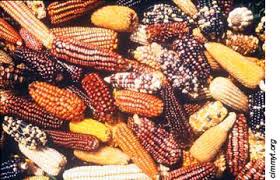
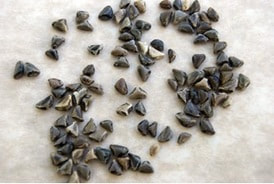
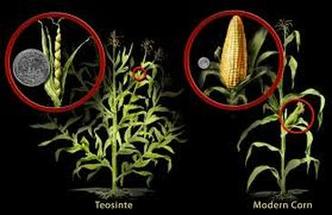




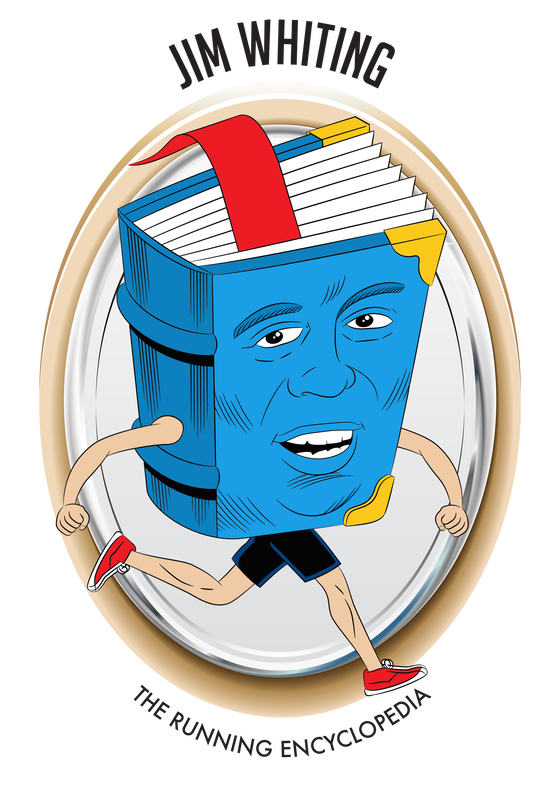




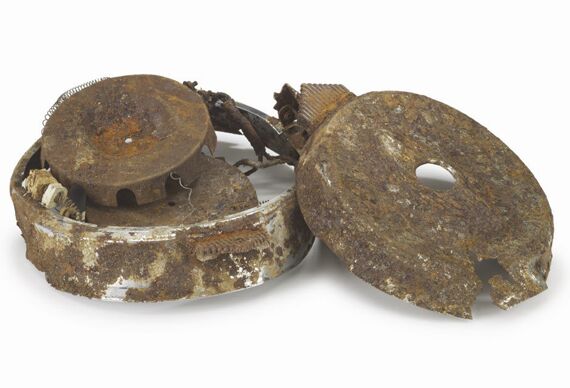

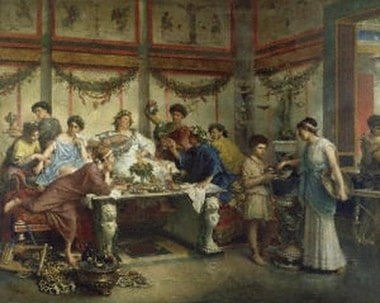

 RSS Feed
RSS Feed
